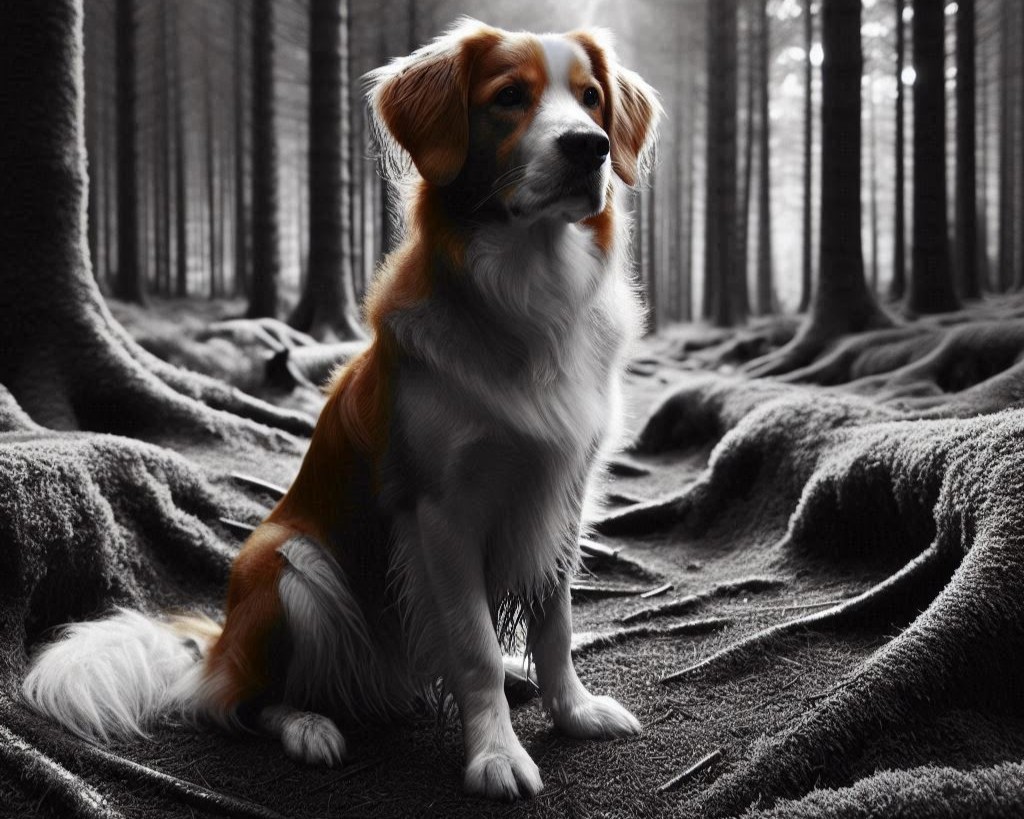
Are dogs colour blind? A dog’s world is full of scents, sounds, and movement, but how do they see it? For decades, many believed that dogs could only see in black and white, but modern research has revealed a much more nuanced reality. While dogs don’t perceive colours like humans, their vision is far from monochrome.
Unlike the three humans, dogs have only two types of colour receptors (cones) in their eyes. That means their colour vision is limited, much like a person with red-green colour blindness. That is what we mean when we say dogs are colour blind.
Instead of a vibrant spectrum, dogs primarily see shades of blue and yellow, while reds and greens appear as shades of grey or brown. However, their vision is highly adapted for motion detection and low-light conditions, making them excellent hunters and navigators even in dim environments.
Understanding how dogs see the world can improve their interactions with their surroundings, from choosing toys with colours they can easily distinguish to optimising training techniques. By appreciating their unique visual perspective, enhancing their daily experiences and strengthening the bond between dogs and humans becomes easier.
To offer you the best possible information, we have consulted our expert source, “The Dog’s Health from A to Z: A Canine Veterinary Dictionary,” by John Bleby et al.
How Dog Vision Works
Dogs’ eyes contain two types of cone cells, which allow them to see a limited range of colours. While they cannot perceive the full spectrum like humans, they can still differentiate between certain hues. Their vision is best suited for detecting movement and contrasts rather than distinguishing between multiple bright colours.
Additionally, dogs have more rod cells in their retinas than humans, giving them superior night vision. These cells help them see well in dim lighting, which is useful for their instincts as hunters. Their visual field is also wider than that of humans, allowing them to detect motion from a greater distance.
How Colour Vision Affects a Dog’s Daily Life
Since dogs primarily see blues and yellows, items in these colours are more visually distinct. For instance, a red or green toy may appear dull brown or grey, making it harder to locate in certain environments. Choosing toys and training tools in blue or yellow can make them easier for dogs to recognise and engage with.
Their unique vision also influences how they navigate their surroundings. They rely heavily on contrast and brightness rather than colour differentiation, meaning well-lit areas and clear visual markers are more important to their perception than various colours.
The Role of Other Senses in Perception
Since their colour vision is limited, dogs rely on their other senses- smell and hearing—to gather information about their environment. Their sense of smell is their primary way of understanding the world, often compensating for visual limitations. Their acute hearing further helps them detect movement and sounds that may be out of their line of sight.
Motion detection is another area where dogs excel. Even with fewer colour receptors, they can detect slight movements more efficiently than humans, so they quickly respond to fast-moving objects or animals.
FAQs
Can dogs see any colours at all?
Yes, dogs can see blues and yellows but have difficulty distinguishing between reds and greens, which often appear as shades of brown or grey.
Do dogs rely more on smell or sight?
Dogs primarily rely on their sense of smell, much stronger than their vision. Their eyesight plays a supporting role, especially for detecting movement.
Why do dogs struggle to find red or green toys?
Because dogs perceive reds and greens as dull or greyish shades, these colours don’t stand out to them like blues and yellows do.
Do dogs have better night vision than humans?
Yes, dogs have more rod cells in their retinas, allowing them to see better in low-light conditions than humans.
Can dogs recognise their owners by sight?
Yes, but they rely more on scent and sound to identify familiar people. Their vision is useful, but not their primary means of recognition.
Conclusion
So, are dogs colour blind? Unlike humans, dogs may not see the world in vibrant colours, but their vision suits their needs. Their ability to detect movement, see in low light, and focus on contrasts makes them excellent hunters and companions. By understanding how dogs perceive colours and their surroundings, people can make better choices regarding toys, training, and environment setup, helping dogs live their best lives with their human families.


